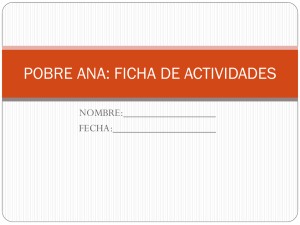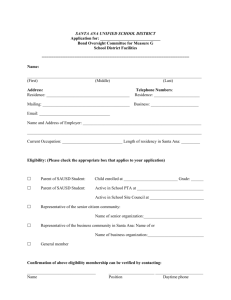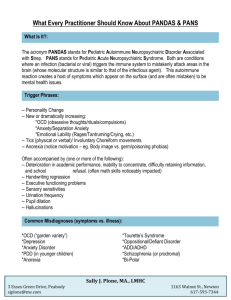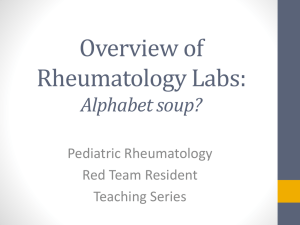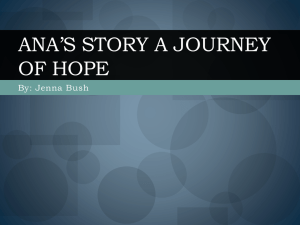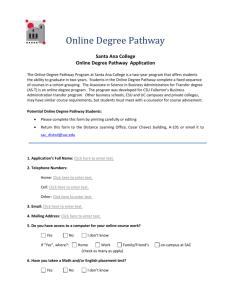Prevalence Of Positive Antinuclear Antibodies In Thalassemic
advertisement
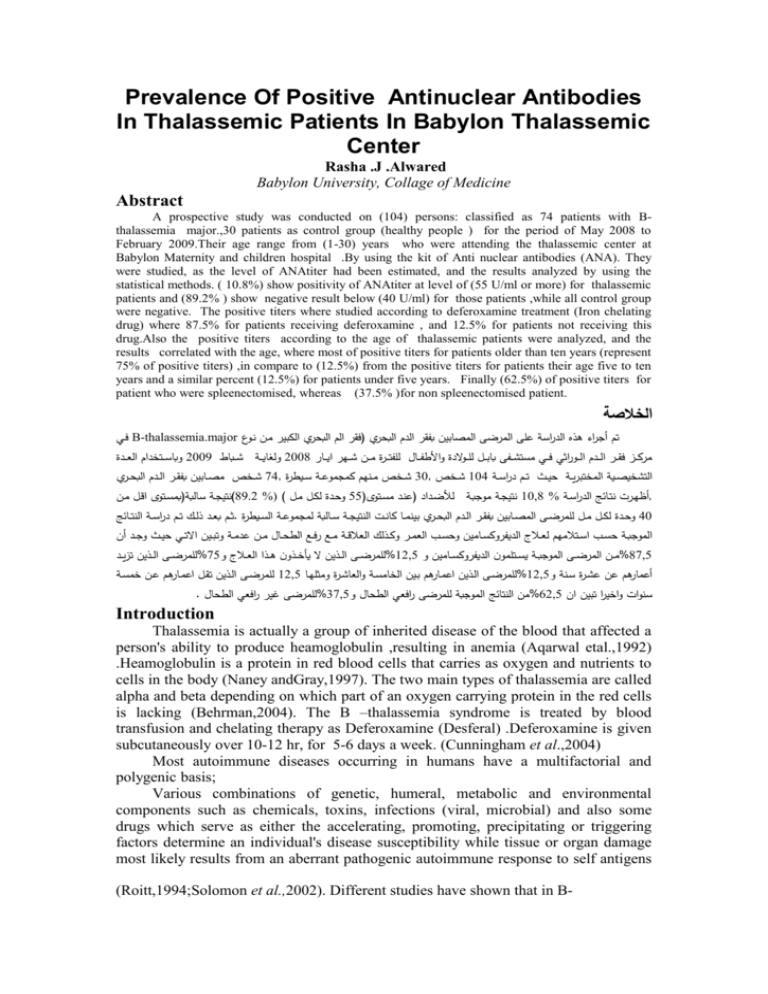
Prevalence Of Positive Antinuclear Antibodies In Thalassemic Patients In Babylon Thalassemic Center Rasha .J .Alwared Babylon University, Collage of Medicine Abstract A prospective study was conducted on (104) persons: classified as 74 patients with Bthalassemia major.,30 patients as control group (healthy people ) for the period of May 2008 to February 2009.Their age range from (1-30) years who were attending the thalassemic center at Babylon Maternity and children hospital .By using the kit of Anti nuclear antibodies (ANA). They were studied, as the level of ANAtiter had been estimated, and the results analyzed by using the statistical methods. ( 10.8%) show positivity of ANAtiter at level of (55 U/ml or more) for thalassemic patients and (89.2% ) show negative result below (40 U/ml) for those patients ,while all control group were negative. The positive titers where studied according to deferoxamine treatment (Iron chelating drug) where 87.5% for patients receiving deferoxamine , and 12.5% for patients not receiving this drug.Also the positive titers according to the age of thalassemic patients were analyzed, and the results correlated with the age, where most of positive titers for patients older than ten years (represent 75% of positive titers) ,in compare to (12.5%) from the positive titers for patients their age five to ten years and a similar percent (12.5%) for patients under five years. Finally (62.5%) of positive titers for patient who were spleenectomised, whereas (37.5% )for non spleenectomised patient. الخالصة فنB-thalassemia.major باس ننتمدام ال نند2009 ننبا تم أجراء هذه الدراسة على المرضى المصابين بفقر الدم البحري (فقر الم البحري الكبير منن ون لغا ننة2008 للفت ننر م ننن ن ن ر ا ننار فن ن مست ننفى باب ننت للن ن هد ار ف ننا مرك ننق فق ننر ال نندم الن ن ار مصننابين بفقننر النندم البحننري, ننم74 مننو م كمجم عننة س ن ر, ننم30 , ننم104 الت م ص ن ة الممتبر ننة حينند تننم د ارسننة ا نت منن وتيجنة سالبة(بمسنت89.2 %) حند لكنت منت55( وتيجنة م جبنة لضضنداد (عوند مسنت10,8 % أظ نر وتنا ا الد ارسنة الوتيجننة سننالبة لمجم عننة الس ن ر ننم ب نند ذل ن تننم د ارسننة الوتننا ا حنند لكننت مننت للمرضننى المصننابين بفقننر النندم البحننري بيومننا كاو ن40 الم جبننة حسننت اسننتعم م ل ننعو الد فر كسننامين حسننت ال مننر كننذل ال ع ننة مننع رفننع ال حننا مننن عدمننة تبننين اهت ن حينند جنند أن للمرضننى الننذين تق نند%75 للمرضننى الننذين ه نمننذ ن هننذا ال ننعو%12,5 مننن المرضننى الم جبننة سننتلم ن الد فر كسننامين%87,5 للمرضنى النذين تقنت اعمنارهم عنن ممسنة12,5 للمرضنى النذين اعمنارهم بنين المامسنة ال ا نر م ل نا%12,5 أعمارهم عن ع نر سنوة ال حا للمرضى غير راف%37,5 ال حا من الوتا ا الم جبة للمرضى راف%62,5 امي ار تبين ان سو ا Introduction Thalassemia is actually a group of inherited disease of the blood that affected a person's ability to produce heamoglobulin ,resulting in anemia (Aqarwal etal.,1992) .Heamoglobulin is a protein in red blood cells that carries as oxygen and nutrients to cells in the body (Naney andGray,1997). The two main types of thalassemia are called alpha and beta depending on which part of an oxygen carrying protein in the red cells is lacking (Behrman,2004). The B –thalassemia syndrome is treated by blood transfusion and chelating therapy as Deferoxamine (Desferal) .Deferoxamine is given subcutaneously over 10-12 hr, for 5-6 days a week. (Cunningham et al.,2004) Most autoimmune diseases occurring in humans have a multifactorial and polygenic basis; Various combinations of genetic, humeral, metabolic and environmental components such as chemicals, toxins, infections (viral, microbial) and also some drugs which serve as either the accelerating, promoting, precipitating or triggering factors determine an individual's disease susceptibility while tissue or organ damage most likely results from an aberrant pathogenic autoimmune response to self antigens (Roitt,1994;Solomon et al.,2002). Different studies have shown that in B- thalassemia patients treated with iron chelators , various auto antibodies are often found, because of these iron chelators or possible development of an autoimmune phenomenon and also show clinical manifestations of arthralgi as, joint pains or joint swellings(Roitt,1994). Antinuclear antibodies are a unique group of auto antibodies that have the ability to attack structures in the nucleus of cells. The nucleus of a cell contains genetic material referred to as DNA (deoxyribonucleic acid). (Solomon et al., 2002; Turkantoni et al.,2008) . ANAs are found in patients who have various autoimmune diseases, but not only autoimmune diseases. ANAs can be found also in patients with infections, cancer, lung diseases, gastrointestinal diseases, hormonal diseases, blood diseases, skin diseases, and in people with a family history of rheumatic disease or drugs like (deferoxamine). (Tan,1982; RaymondandYung,1994 ) The antinuclear antibodies test (ANA) is ordered to help screen for autoimmune disorders such as systemic lupus erythromatous (SLE).Or it is ordered when the doctor suspected that the patients may have developed an additional autoimmune disease (Solomon etal.,2002). Aims of the Study 1- Estimation of prevalence of positive antinuclear antibodies in thalassemic patients in Babylon thalassemic center and compared with control group. 2- The correlation of ANA with certain variables including Age, Deferoxamine intake and spleenectomy . Patients and methods This study started from May 2008 to the February 2009; include one hundred and four persons (104), thirty (30) Persons as control group, seventy-four (74) as thalasseimic patients their aged range from 1-30 years by Using two Kits of ELISA for ANA test (IMTEC-ANAScreen,ELISA for the Quantitative Determination of Antinuclear Antibodies (Ig(GAM)), the following data have been collected -age - deferoxamine intake. -Spleenectomy or not Sample collection s: Three ml of blood was collected from each person by vein puncture, serum sample were separated and kept at -20C until the time of processing. Statistical analysis:The percent was used to compare different results during this study . Result Fig (1) prevalence of < 5 YEARS positive ANA titer in thalassemic patients > 10 YEARS Fig (2) Distribution of positive ANA according to age Fig(3 ) Comparisim of positive ANA titers between patients received deferoxamine and patients not received it. Fig(4) Comparisim of positive ANA titers between spleenectomised patients and other not. Discussion Deferoxamine is a drug used in the treatment of thalassemia but this drugs have many side effects one of these effects when used for long period cause many autoimmune diseases(Karager and Basel, 2003) .Patients with thalassemia major on iron chelators such as deferoxamine shows change in the autoimmune profile suggestive of some human immune alteration. This study shows positive ANA titers in (10.8%) of thalessemic patients and a negative results in(89.2%) in Fig (1) that it is different from other study like (Aqarwal et al.,1992) that’s shows a positive ANA titer in 14% of thalassemic patients from thirty –eight patients, our result may be due to irregular treating with this drug because it's not always available in the center and the poor compliance because the deferoxamine gives subcutaneously for five nights per week and it is painful ,also there's shortening in the infusion pumps that’s essential to infuse the drug over the night. Fig.(2) that shows an increase in percent of positive ANA with the age of patients which is similar with (Kapadia et al ;1980Grady et al.,1995; Naneyand Gray, 1997), that studied when the patients used treatment (iron chelator) in older age causes elevated in titer of ANA titer ,also the older ages patients had larger doses of deferoxamine for longer period. Fig (3) shows acomparisim between the patients used deferoxamine and other not ,where most of positive ANA titers (87.5%) for patients receiving the treatment and only (12.5% ) of positive titers for patients not received this drug , this finding correlated with (Aqarwal etal.,1997;Karager and Basel,2003;Turkantoni etal.,2008) that thalasemic patients depended on deferoxamine for long period show changes on the autoimmune profile. In the Fig (4) shows that patients who had spleenectomy are liable to the autoimmune disordered and that correlated with othe studies like (Kapadia et al., 1980; Aqqrwal et al.,1997; Naney and Gray,1997) who shows that thalassemic patients with spleenectomy susceptible to autoimmune disordered more than other patients who are not spleenectomy.also the spleenectomised patients are older age and use deferoxamine for longer period, in this study 62.5% of positive ANA for spleenectomised patients and 37.5% for other patients . References Aqarwal MB, Viswanathan C , Guptess , Desai NG, Indian pediatric ,1992 ; (8) :614. Aqarwal MB, Wanthan G, Desi NG, Vasandani D , Bhave A, Indian pediatric 1997; (5): 607-610. Behrman, Kliegman, Jenson ,2004 Nelson Text book of pediatrics. Pp 2034 – 2037. Cunningham MJ ,Macklin EA, Neufeld EJ, Cohen R. complication of beta– thallasemia major in North America .Blood ,2004 ; 104-349. Grady R W ,Akbar AN, Giadina PJ , Ailgartner MW , Dispropration ltmphoid cell subsets in the thallasemia major .The relative contribution of Transfusion and splenectomy .BJ ,1995 ,59 ;713 – 720. Kapadia A, Markensol AL ,Millee DR, Good RA,Gupta SL .Lymphoid cell sets and serum immunoglobulin in patients with thallasemia intermedia : Relation ship to serum Iron and splenectomy Br . J Hematol , 1980 ,45; 405 -416 . Karager AG , Basel MH , Acta Hematol 2003 ; 109 ; 35 -39 . Naney T,Oliveri anGray M . Briten Heamatology , 1997 , 89; 739. Roitt I: Essential Immunology, ed 8. Oxford, Blackwell Scientific Publications, 1994. Raymond L, Yung MB, Bruce C. Drug-induced lupus. Rheum Dis Clin North Am 1994; 20: 61-86. Solomon DH,Kavanaugh AJ, Schur P. The American College of Rheumatology and Aoltoc Committee on Immunology testing Guideline Evidence–based guidlines for the use of immunology test . antinuclear antibody 2002 ; 4: 434 . Tan EM: Autoantibodies to nuclear antigens (ANA): Their immunobiology and medicine. Immunol 1982;33:167. Turkantoni N , Athhanassiou H ,MetaxaM ,Zafirion D, Economou M, Taparkou A , Taskalidou F . Heamoglobulin , 2008 ;32 (1-2 ) : 35 – 40.

